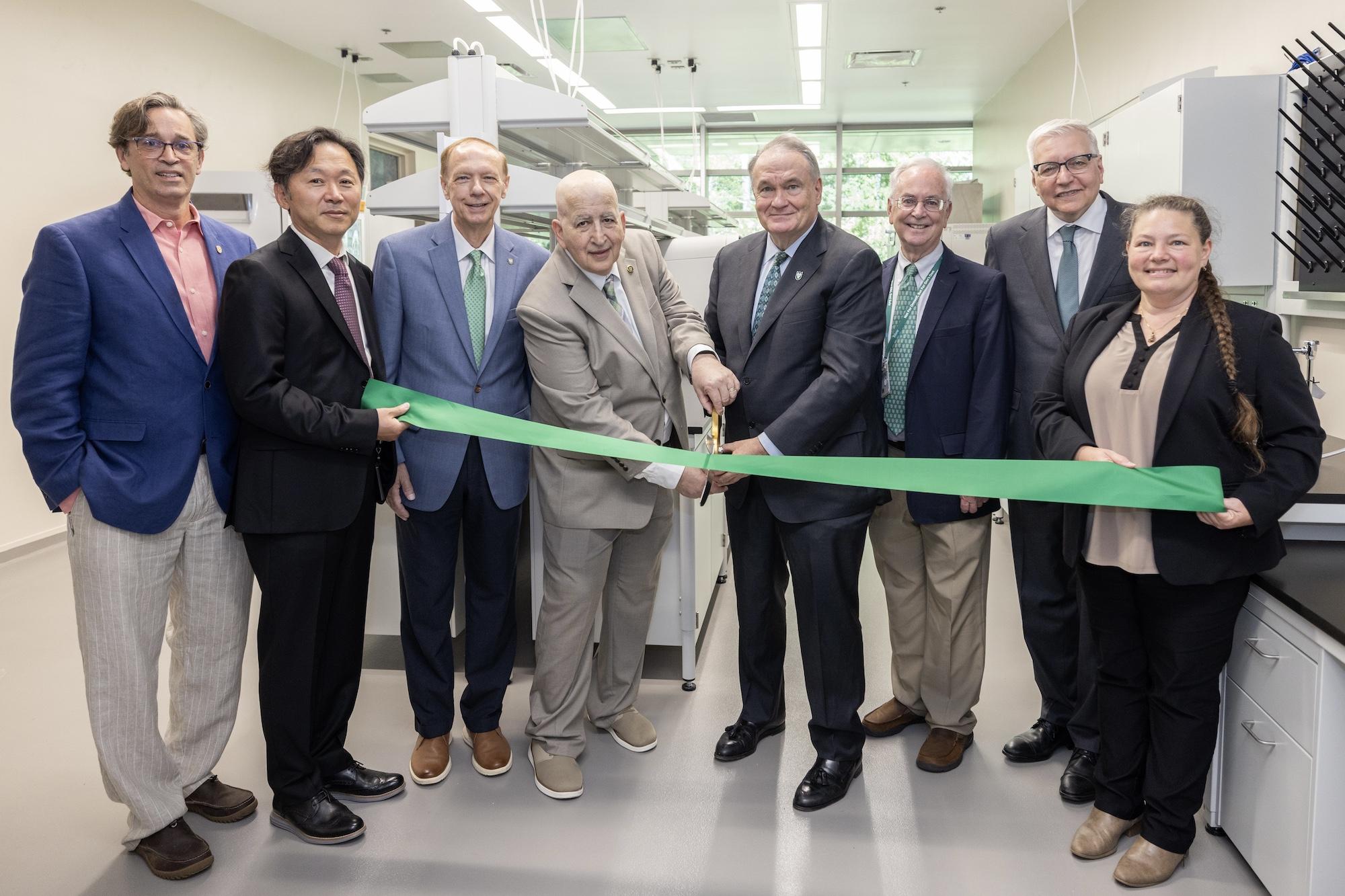Tulane National Primate Research Center celebrates expansion with ribbon cutting
The Tulane National Primate Research Center (TNPRC) celebrated the completion of two major facility upgrades with a ribbon-cutting ceremony on Monday marking the opening of a new 10,000-square-foot office building and a 1,000-square-foot biosafety level-2 laboratory. Located in Covington, Louisiana, the center has contributed to major discoveries related to HIV, tuberculosis, Lyme disease and other infectious diseases that impact global health. TNPRC leaders say the latest additions expand the center’s capacity to fight disease and reflect a critical joint investment by the National Institutes of Health (NIH) and Tulane to modernize infrastructure and support research growth at the center.
Tulane President Michael A. Fitts and TNPRC Director Jay Rappaport led the ceremony, joined by Dr. Lee Hamm, senior vice president for health sciences, and Chief Operating Officer Patrick Norton, as well as TNPRC leadership including Chief Operations Officer Mark A. Alise, Chief Veterinary Medical Officer Kasi Russell-Lodrigue and Associate Director for Research Woong-Ki Kim. TNPRC faculty and staff gathered to celebrate the addition of modern workspaces and expanded lab facilities designed to foster collaboration and improve efficiency.
The new TNPRC office building, which broke ground in July 2024, provides a centralized workspace for nearly 70 employees and includes an expanded occupational health clinic that will serve the center’s 350-member workforce. It replaces older modular units and enhances the overall quality of the work environment.
“The TNPRC exemplifies the power of research to improve lives, prevent disease and prepare us for tomorrow’s health challenges,” said President Fitts. “These new facilities support that mission and reaffirm Tulane’s commitment to the center’s future.”
The event also marked the opening of a new biosafety level-2 lab within the center’s Regional Biocontainment Laboratory (RBL). Funded by a renovation grant from the NIH, the new space allows for certain preparatory work to be conducted outside the more restricted BSL-3 environment, freeing up capacity in the high-containment lab for advanced research. This expansion supports the development of vaccines and therapies for emerging infectious diseases and biodefense.
“By shifting lower-level work into the new BSL-2 lab, we’re able to maximize use of our BSL-3 space and accelerate research on medical countermeasures,” said Rappaport.
The RBL is one of only 12 in the United States and the only one located within a National Primate Research Center. It serves as a key component of the national biodefense program, supporting research on high-consequence pathogens and emerging infectious diseases.
Established in 1964, the TNPRC is one of seven centers funded by the NIH dedicated to advancing biomedical research through the use of nonhuman primate models, under rigorous ethical standards.

